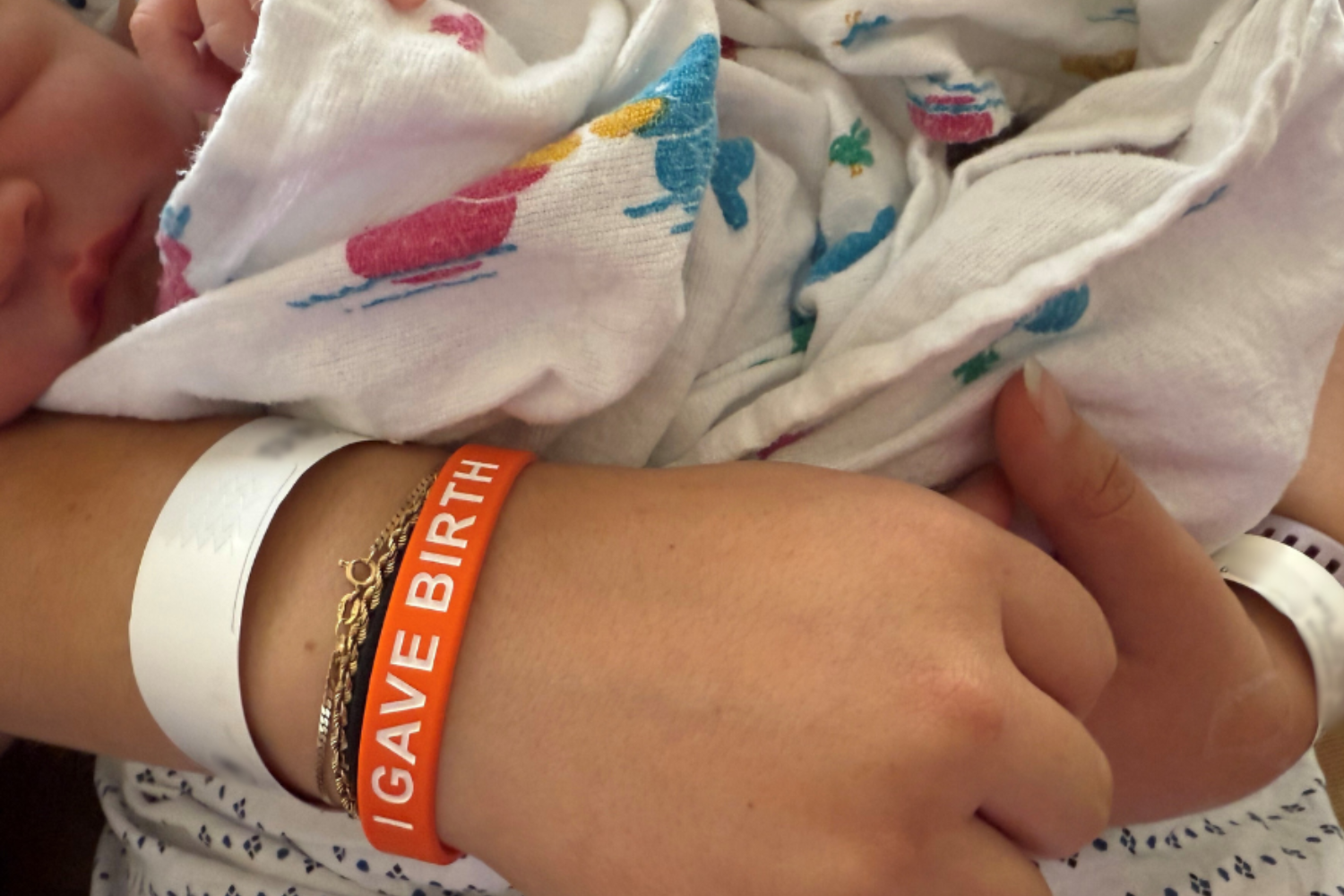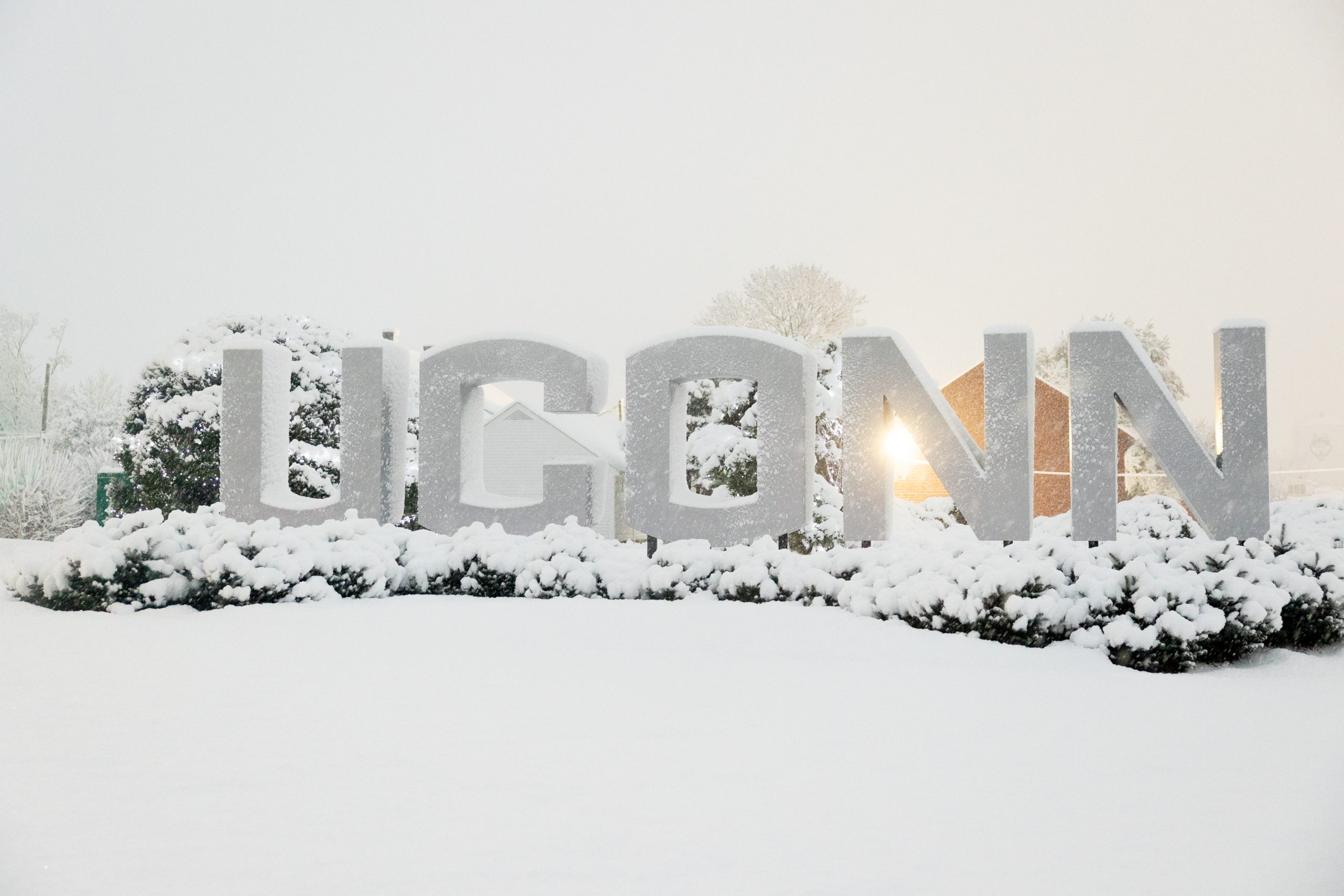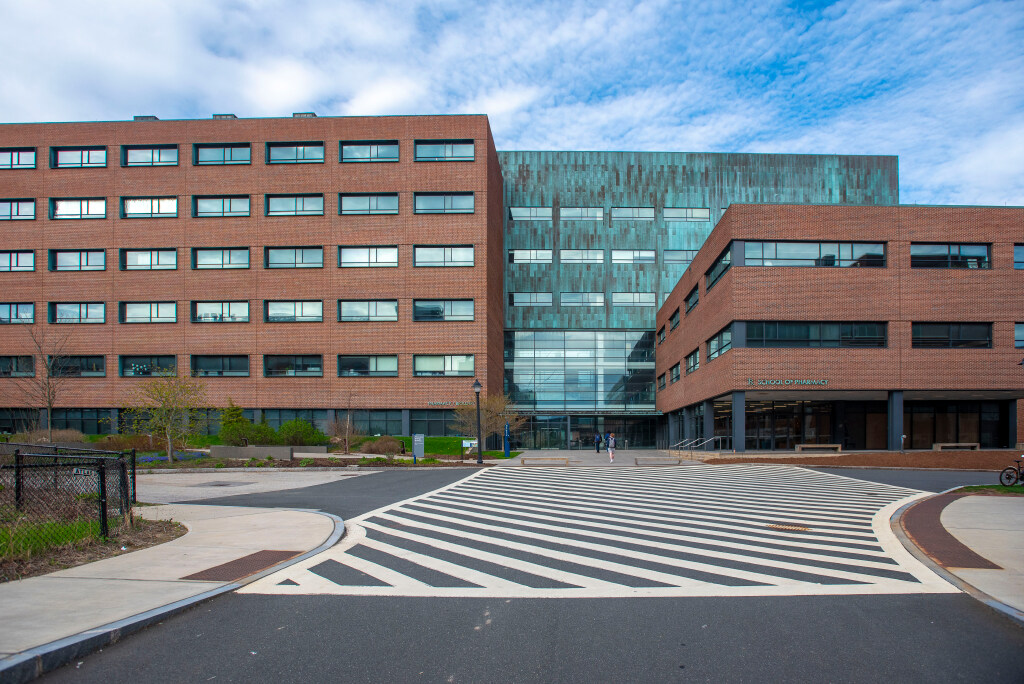 Alumnus Michael Douglass (B.S. Electrical Engineering, ’79) and his wife, Tamela Richards, recently donated $25,000 to the University of Connecticut to establish an undergraduate scholarship in electrical engineering. Mr. Douglass is employed by Dallas-based Texas Instruments, which matched their gift 100% to create a $50,000 endowment that will support the Richard and Helen Douglass Endowed Scholarship in Electrical Engineering. The scholarship is named in honor of Mr. Douglass’s parents.
Alumnus Michael Douglass (B.S. Electrical Engineering, ’79) and his wife, Tamela Richards, recently donated $25,000 to the University of Connecticut to establish an undergraduate scholarship in electrical engineering. Mr. Douglass is employed by Dallas-based Texas Instruments, which matched their gift 100% to create a $50,000 endowment that will support the Richard and Helen Douglass Endowed Scholarship in Electrical Engineering. The scholarship is named in honor of Mr. Douglass’s parents.
“Both my wife and I were blessed with parents who supported our education,” said Mr. Douglass. “What better way to return the love and support of your parents? This way, we can help many generations of students like our parents did for us.”
The family also believes their gift will allow UConn Engineering to attract a greater number of top students, which, in turn, will enhance the School’s reputation and prestige. Each year, engineering students at UConn receive a cumulative average of $530,000 in scholarship support from private donors and corporations.
Mr. Douglass, who earned an MBA from the University of Dallas in 1985, is a Distinguished Member of the Technical Staff at Texas Instruments, which he joined shortly after graduating from UConn in 1979. His path to TI was circuitous.
The company made an interview stop on campus, but slots filled up almost immediately. On the advice of Career Services personnel, he left behind a resume. Evidently it created some buzz, because a month later, he received an invitation to fly to Dallas for an interview. On this first flight of his life, Mr. Douglass experienced the type of air travel worthy of Hollywood.
“This was February and, of course, the day of my flight was a huge blizzard. While driving to Bradley Field, I could barely see the road. My plane took off just before they shut down the airport due to the blizzard.” The flight was rerouted to Atlanta, where it landed in a dense fog. “I finally got to Dallas and to my hotel at 4:00 in the morning, knowing I had an 8:00 a.m. interview. . .I met some wonderful people, saw some exciting job opportunities, and apparently impressed someone. The best thing was that the trees were in bud, the grass was turning green, the temperature was 80 degrees, and Dallas was an exciting town. Imagine that! Green grass and warm temperatures in February!”
TI Career
At TI, he worked first as a reliability engineer in the Defense Systems Group, which he deems a great introduction to the engineering profession. Over the next few years, he worked with a small group that was developing boat and plane navigational equipment followed by a return to the Defense Group to work on product development for the U.S. Air Force. “This was probably the most exciting and challenging opportunity I had had up to that point. I was in charge of the quality and reliability and had to use all the interpersonal skills I could muster to drive the program through some difficult challenges. When we got through it, we had developed a great prototype product and a really great team environment,” he said.
Several years later, he found himself working on a submarine detector project that, he said, could be traced back to TI’s earliest roots. “It’s little known that TI actually started as an oil exploration company in the 1930’s. The founders developed a product that sensed disturbances in the Earth’s magnetic field as a way to find oil fields. During WWII, they won a contract from the U.S. military to develop the technology to detect submarines under water. Several generations of this product later, there I was.”
Mr. Douglass recounted that the best thing about his early years with TI was meeting his wife, Tamela “Tammy” Richards, who had graduated from Texas A&M University and started working in the same area. He noted that the office romance turned into a 21-year marriage and “two great kids: Julia, 15, is an accomplished dancer and Mark, 11, is a very good soccer player.”
Birth of DMD
In 1992, he joined a new TI group called Corporate Venture Projects, which focused on transforming new technologies into commercial products and businesses. “We decided to start with this odd little device developed in our research labs called a Digital Micromirror Device or DMD, used in the TI Digital Light Processingtm (DLP) program. It is a microelectromechanical systems (MEMS) device consisting of between 500,000 and 2,000,000 mirrors, each mirror being less than 10 microns sq. I started working on it when it was just a research project with a lot of potential. We methodically worked through the problems and eliminated them one-by-one. It was very difficult but incredibly rewarding to accomplish something many thought impossible.”
The DMD project was an important one. He explained that the reliability of the mirrors, which can wiggle back and forth for trillions of cycles and over 100,000 hours without failing, enabled TI to sell the units to a wide range of commercial customers. DLP technology is found in many applications, including HDTV, data projectors, and digital cinema. He said that TI shipped its first projector in 1996 and now holds roughly 50% of the market share. “The first projectors,” he reminisced, “weighed about 27 lbs. and were the size of a small suitcase. Now they are well under three pounds, handheld, and brighter than ever…The smallest projector weighs just a few ounces and can be assembled into cell phones. Soon you will not only be able to take pictures with your phone but also project them (or downloaded movies) on a wall to share with your friends.” Countless other products now being developed include printing, spectroscopy, communications and medical applications.
In recognition of his DMD work, he was elected to the position of Senior Member of the Technical Staff and eventually Distinguished Member of the Technical Staff, a level of achievement marked by no more than 2% of the company’s technical contributors.
The UConn Years
Mr. Douglass believes his UConn Engineering education prepared him well for his exciting, constantly evolving career with TI. “My UConn education was great. I was exposed to all aspects of engineering, providing a broad basis for my technical career. I learned how to learn, which is critically important in a high-tech environment. Watching the engineering school grow since I left makes me envious of the facilities available to today’s students and the opportunities awaiting them.”
He also recalls his formative years at UConn as being fun. “I remember one winter we had a huge snowstorm that shut down not just the school, but the entire state of Connecticut. It was fun sledding down the hill on cafeteria trays [now a relic of the past in UConn dining halls] and playing football in the snow. I made life-long friends,” he said.
Mr. Douglass and his wife, Tammy, have carried that feeling with them throughout their careers, and their decision to establish the Richard and Helen Douglass Endowed Scholarship at UConn is a tangible affirmation of the connection Mr. Douglass maintains with his alma mater and future engineers.


